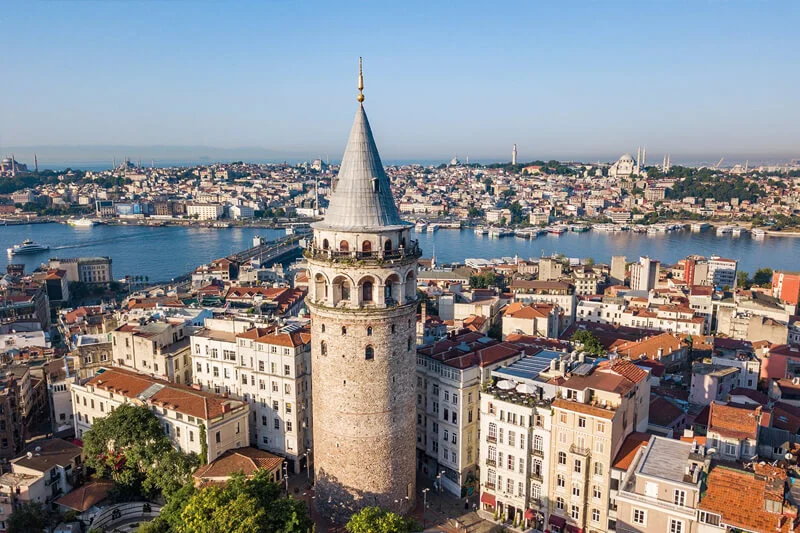Istanbul is home to numerous historical monuments that reflect its rich and diverse history. Here are some prominent historical monuments in Istanbul:
Hagia Sophia: Originally built as a Byzantine church in the 6th century, Hagia Sophia later served as a mosque during the Ottoman era and is now a museum. It is renowned for its magnificent dome, intricate mosaics, and architectural grandeur.
Sultan Ahmed Mosque (Blue Mosque): Built in the 17th century, the Blue Mosque is one of Istanbul’s most famous landmarks. It is known for its stunning blue tiles, six minarets, and a spacious courtyard. The mosque is still an active place of worship and welcomes visitors.
Topkapi Palace: The Topkapi Palace was the primary residence of the Ottoman sultans for nearly four centuries. It showcases opulent chambers, beautiful courtyards, and houses a remarkable collection of artifacts, including Ottoman treasures, weapons, and relics.
Dolmabahçe Palace: Constructed in the 19th century, Dolmabahçe Palace served as the administrative center of the Ottoman Empire. It is a striking example of Ottoman architecture blended with European influences. The palace features lavish interiors, crystal chandeliers, and expansive gardens.
Basilica Cistern: This ancient underground water reservoir was constructed during the Byzantine era. It features rows of marble columns and is famous for its atmospheric ambience and the Medusa heads at the base of two columns.
The Grand Bazaar: The construction of the Grand Bazaar began in the 15th century, shortly after the Ottoman conquest of Constantinople. Over the centuries, it expanded and evolved into the sprawling market it is today.It consists of a labyrinthine network of covered streets, passages, and more than 4,000 shops. The market is divided into several sections, each specializing in different types of goods, such as jewelry, textiles, spices, ceramics, carpets, and more.
The Spice Bazaar: Also known as the Egyptian Bazaar (Mısır Çarşısı), is another famous and bustling market in Istanbul. The Spice Bazaar was constructed in the 17th century during the Ottoman period. It was established as a hub for the trade of various exotic spices and goods brought from different parts of the world, including Egypt, hence its alternative name, the Egyptian Bazaar. The Spice Bazaar is an excellent place to find unique souvenirs and gifts. From Turkish spices and teas to traditional sweets and skincare products, there are plenty of options to take home a taste of Istanbul
The Galata Tower (Galata Kulesi) is an iconic landmark located in the Galata neighborhood of Istanbul, Turkey. It was originally built as a wooden tower in the 6th century during the Byzantine era. Over the centuries, it underwent several renovations and reconstructions, with the current stone tower dating back to the 14th century during the Genoese occupation of Istanbul. The Galata Tower stands at a height of 67 meters (219 feet) and offers panoramic views of the city.
Sultanahmet Square, also known as the Hippodrome of Constantinople, is a historic square located in the Sultanahmet neighborhood of Istanbul, Turkey.
Sultanahmet Square has played a significant role throughout Istanbul’s history. It was originally built during the Roman period as a chariot racing track and served as the social and sporting center of Constantinople (now Istanbul). Over the centuries, it witnessed numerous events and was the focal point of the city’s social and political life.
Monuments and Landmarks: Sultanahmet Square is surrounded by several prominent landmarks, making it a popular tourist destination. Some notable monuments and structures include:
Obelisk of Theodosius: Standing in the center of the square, the Obelisk of Theodosius is an ancient Egyptian obelisk brought to Constantinople during the 4th century. It is one of the oldest monuments in Istanbul and is adorned with intricate hieroglyphs. Serpent Column: Near the Obelisk, there is the Serpent Column, an ancient bronze column that once stood in the Temple of Apollo in Delphi, Greece. It was relocated to the Hippodrome by Emperor Constantine.


Comment (0)